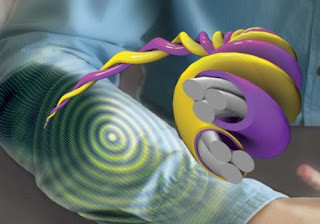Fabrics containing flexible
electronics are appearing in many novel products, such as clothes with in-built
screens and solar panels. More impressively, these fabrics can act as
electronic skins that can sense their surroundings and could have applications
in robotics and prosthetic medicine. Researchers at King Abdullah University of
Science and Technology (KAUST), Saudi Arabia, have now developed smart threads
that detect the strength and location of pressures exerted on them. Most
flexible sensors function by detecting changes in the electrical properties of
materials in response to pressure, temperature, humidity or the presence of
gases. Electronic skins are built up as arrays of several individual sensors.
These arrays currently need complex wiring and data analysis, which makes them
too heavy, large or expensive for large-scale production.
Researchers built their smart
threads from cotton threads coated with layers of one of the miracle materials
of nanotechnology: single-walled carbon nanotubes (SWCNTs). They showed their
threads had decreased resistance when subjected to stronger mechanical strains,
and crucially the amplitude of the resistance change also depended on the
thickness of the SWCNT coating. These findings led the researchers to their
biggest breakthrough: they developed threads of graded thickness with a thick
SWCNT layer at one end tapering to a thin layer at the other end. Then, by
combining threads in pairs they could not only detect the strength of an
applied pressure load, but also the position of the load along the threads. They
have used their smart threads to build 2D and 3D arrays that accurately detect
pressures similar to those that real people and robots might be exposed to.
More information:
